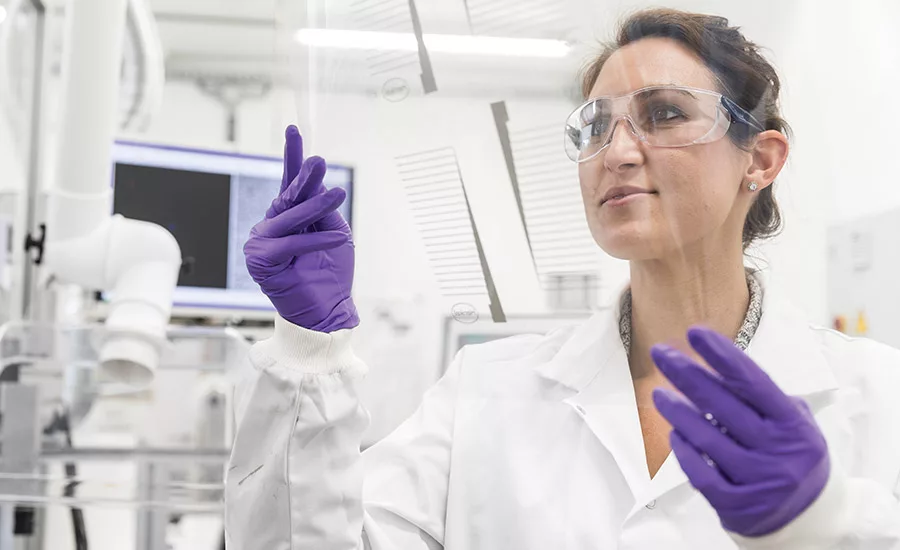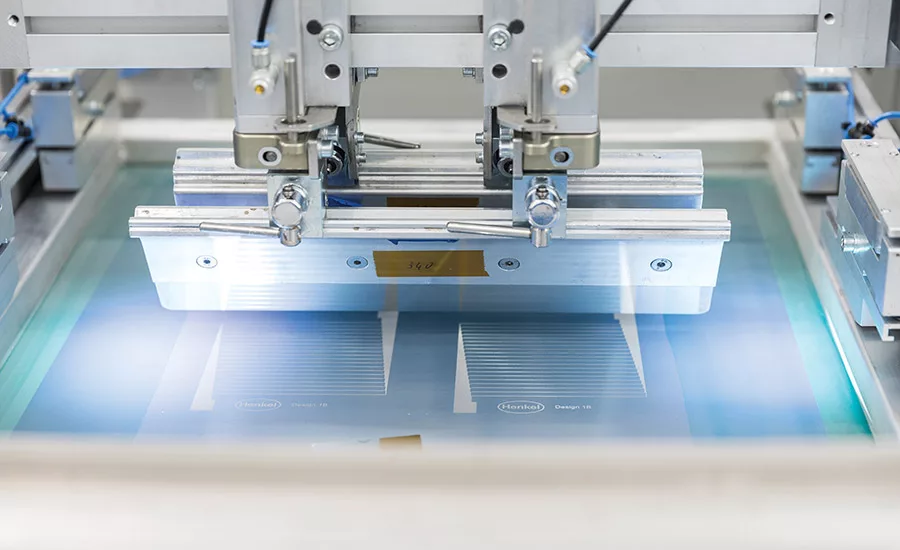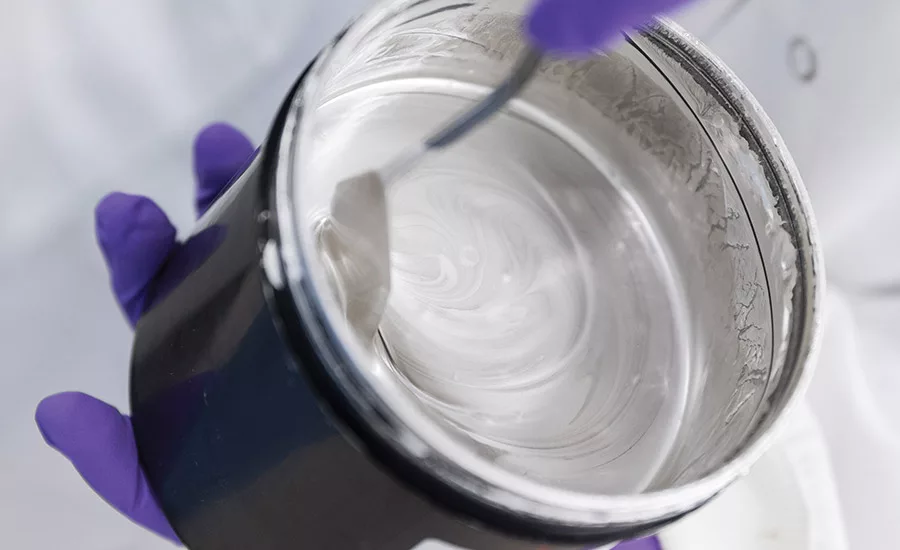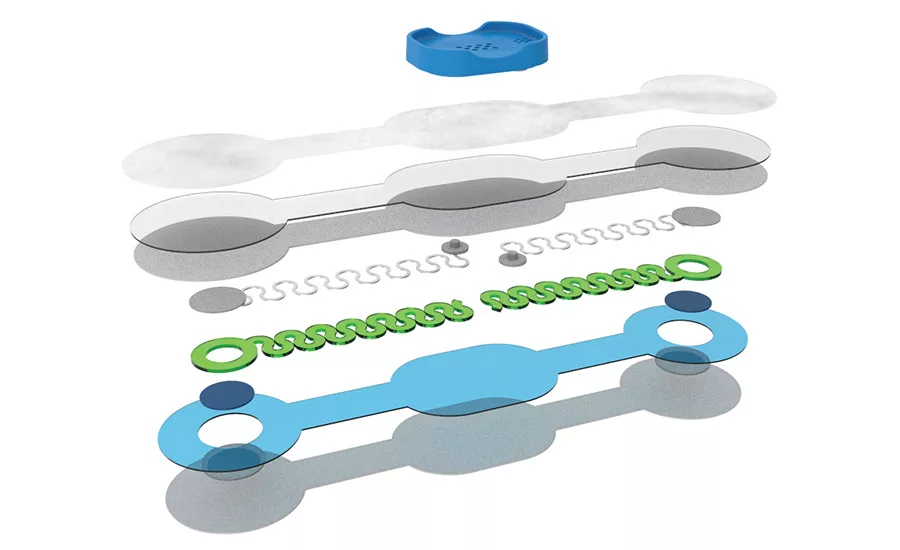Printed Electronics: Enabling Remote Healthcare and Enhancing Patient Treatment
Many innovative digital health solutions rely on printed electronics that are enabled by functional inks, coatings, and adhesives.


Printed electronics enable us to live in smart homes, improve our lives with smart healthcare products, and create smart solutions for mobility and connectivity.

Functional inks that conduct electricity can now be printed onto a huge range of materials.

Henkel developed the electrodes and conductive inks for the COVID-19 smart patch.
The current COVID-19 pandemic has put global healthcare systems under tremendous pressure. While some of the impacts are short term, others are considered transformative. The massive increase in demand for medical services and the variety of lockdown measures across nearly all countries have shown the need for new solutions in medical diagnosis, treatment, and services.
Virtual healthcare, for example, has been around for a long time but did not represent a significant part of mainstream healthcare delivery until now. According to recent studies from Frost & Sullivan, the current pandemic will emphasize telemedicine’s clinical, operational, and financial value in the future. Many innovative digital health solutions rely on printed electronics. The technology is seen as a game-changer not only in healthcare but in several other industries as well.
Digitalization Drives Demand for Smart Applications
The ongoing expansion of the Internet of Things (IoT) has already significantly changed our lives with connected devices. As consumers demand smaller and less expensive products, manufacturers for electronic applications must incorporate high-volume, low-cost solutions. Printing is one of the most cost-effective production methods for certain applications. Therefore, the printed electronics technology is an additive technology to traditional electronics that helps to address this high-throughput, reduced-cost scenario.
Printed electronics make previously unknown functionalities possible, enabling us to live in smart homes, improving our lives with smart healthcare products, and creating smart solutions for mobility and connectivity. This is generating rapidly increasing demand from companies that want to add smart functions to their products. According to Transparency Market Research, the market for printed electronics is expected to reach $65 billion by 2024.
Functional Inks and Coatings
Inks containing metal particles that conduct electricity can now be printed onto a huge range of materials, including flexible surfaces like fabric for diapers or medical sticking plasters. The ink allows electricity to flow around the circuit, which enables a thinner, more flexible, and more cost-effective alternative to standard rigid circuit boards. These innovations generate rapidly rising demand from companies that want to add smart functions to their products, offering a new level of connectivity for medical solutions, in-home conveniences, consumer electronics, and advanced automotive systems that are reliable and effective.
“While we see an increasing importance of technological innovations in our daily lives, such as the Internet of Things or 5G, industries need to make sure to keep up with these developments,” says Stijn Gillissen, global head of Printed Electronics at Henkel Adhesive Technologies. “Printed electronics increasingly impact a variety of industries which are constantly confronted with new customer and consumer demands to become more innovative and digital.”
Innovative Healthcare Solution
In particular, the healthcare and medical sector offers tremendous growth potential for printed electronics, which currently is accelerated by the impact and disruptions of COVID-19. Experts predict that the coronavirus will lead to transformations in different healthcare areas. In fact, the drivers for transformation are quite strong and long-due; COVID-19 is just an accelerating factor for a long-term and permanent shift.
Indeed, the trend is primarily caused by the growing and ageing population placing strain on the healthcare sector, hospitals, and care institutions. With this global development, the costs for medical care and healthcare systems grow exponentially and thus create an increasing demand for innovative IoT solutions that can relieve medical staff and institutions.
“Digitalization and smart systems—all-in-one solutions that are easy and quick to implement—can ease the workload of our healthcare staff significantly,” says Hans Danneels, co-founder of the Belgian company Byteflies.
Together with Henkel and five other medical and technology companies, Byteflies has developed a smart health patch for remote patient monitoring. The system was initially set up to monitor the vital functions of patients with heart failure and epilepsy. However, the outbreak of COVID-19 prompted the partners to leverage the patch’s potential for coronavirus patients. This new “COVID-19 smart patch” allows continuous, remote, and wireless monitoring of patients’ respiration, heart rate, and temperature.
All partners provided expertise and technology components for the 15-cm-long adhesive patch, which can easily be applied to the left side of the chest. It has been developed especially for skin-friendly medical use and contains electrodes and conductive inks to register vital signs. A “sensor dot” located in the center of the patch collects the patient’s vital signs and wirelessly sends all the data to the cloud. The nurses in healthcare centers and the patient’s general practitioner or specialist can then access this cloud data on a secure and user-friendly platform.
“Printed electronics devices require a complex interplay of different components and technologies,” says Gillissen. “At Henkel we believe in a partnership approach that brings the entire value chain together and helps uniting and connecting experts of all related fields.”
The “COVID-19 smart patch” concept is the result of strong collaboration. Henkel developed the electrodes and conductive inks that enable the patch to be used for five days rather than just one. Byteflies, which is already medically certified in this area, created the sensor that monitors the data and sends it to the platform. Quad Industries printed the electrodes, conductive inks, and adhesives and integrated them into wearable patches.
The Belgian branch of Japanese multinational Nitto Denko Corp. developed the patch’s skin-friendly, easy-to-remove adhesive for medical use, which significantly increases the patient’s comfort. Belgian microchip expert Melexis developed the temperature sensor and contributed its expertise to the project. Televic, a specialist in high-tech communication systems, developed the platform that collects the data and alerts users when levels deteriorate. Healthcare center Z-Plus ensures that the patch’s measured levels are monitored by its nurses, gives personal feedback to the patients, and immediately notifies the hospital and physician in case of any deviating or alarming levels.
The patch demonstrates the huge potential of printed electronics applications. “Most COVID-19 patients’ vital signs are recorded manually,” explains Hans De Clercq of Byteflies. “The staff in hospitals and care homes need to take these vital signs several times a day and then process the data manually. Our system has the potential to save them a lot of time and reduce the amount of times they are exposed to possible infection.”
In addition, the system also offers advantages to patients in home quarantine or in care homes, as it enables measurements to be taken and sent automatically. Infected people can be assured that the measurements are accurate and are being monitored constantly. The system also improves patient treatment by providing more individualized data over a longer period. As a result, patients can take the appropriate action quickly and can contact a care provider at a healthcare center immediately if necessary. This can offer great reassurance, particularly to elderly people in retirement homes and their families. The system also eases some of the monitoring burden for general practitioners and home nurses, as patients can recover in their home environment while still being reliably monitored.
The Oost-Limburg Hospital in Belgium was the first medical institution to start clinical trials with the smart patch. “After the outbreak of the coronavirus we started running remote monitoring tests based on manual measurements taken by the patients themselves,” says Dr. Pieter Vandervoort, cardiologist, medical coordinator of Future Health ZOL, and head lecturer at UHasselt. “The innovative patch was an interesting complement to this. That is why we started testing the patch for about 20 of our patients back in May.”
Results have been positive. As of mid-November 2020, 19 hospitals in Flanders, Belgium, had begun using the “Covidcare@home” solution to monitor up to 300 patients affected with the coronavirus for 7-10 days. The roll-out is also progressing beyond hospitals, with a first elderly home implementing the monitoring solution as well.
Numerous Opportunities in Healthcare and Medical Markets
The healthcare and medical markets will remain a major growth sector for printed electronics. For example, 86% of people in China, aged 20-49, agree that they get to know their body better by using health tech products. As people live longer, smart applications can simplify the work of medical staff and care institutions by enhancing transparency and treatment options while at the same time giving a sense of safety for patients.
Today, carbon-based, highly flexible inks are already applied in the hygiene market on very thin substrates and function as conductors for moisture sensors. In smart diapers, for example, the printed electronics technology detects moisture and informs caregivers. Smart diapers improve comfort for the wearer, increase caregivers’ efficiency, and make the use of diapers more efficient. Improved sustainability is also a factor, as research implies a significant decrease in diaper use since they are only changed when needed. The moisture-sensing technologies can provide benefits for other care applications as well, such as smart bed sheets.
Independent from COVID-19, the global market for electronic skin patches is expected to double between 2018 and 2024. The prediction is related to the rising number of people with chronic illnesses. People with heart conditions, for example, can use these patches to continuously track their ECG, which their doctors can monitor remotely. People with diabetes can use wearable devices on the skin to monitor blood glucose levels continuously instead of taking blood samples several times throughout the day, which helps them identify exactly the right moment to inject insulin. In addition, an increasing number of new-generation medical devices use printed electronics.
“Due to COVID-19 we currently see a high demand related to medical monitoring applications, for example for Point of Care Devices in diagnostics,” says Gillissen. “Printed electronics can contribute to significantly improve the speed and the accuracy of devices and Henkel materials play a key role to quickly enable our customers to bring new solutions to the market.”
For additional information, visit www.henkel.com or www.henkel-adhesives.com/printedelectronics.
Explore our COVID-19 coverage at www.adhesivesmag.com/coronavirus.
Looking for a reprint of this article?
From high-res PDFs to custom plaques, order your copy today!





